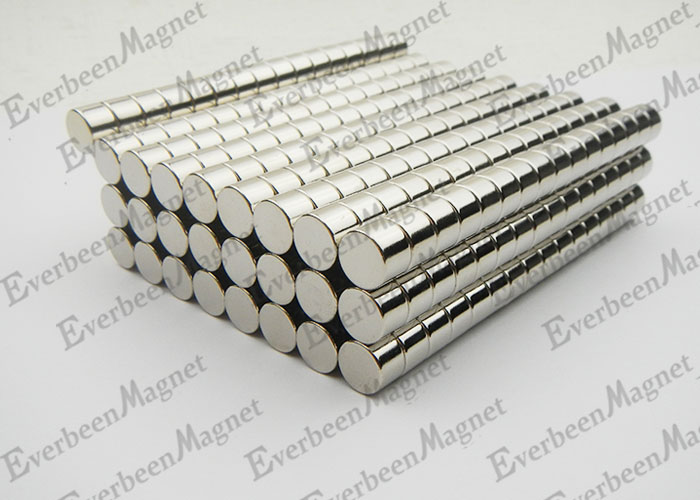The key raw materials for the production of NdFeB magnets include rare earth metal neodymium, rare earth metal praseodymium, pure aluminum, aluminum, boron non-ferrous metals and other rare earth raw materials. The production process of neodymium iron boron magnets, to put it simply, is like this: the raw materials are mixed and smelted, and then the smelted metal material blocks are crushed into small particles. Put small particles into the abrasive tool to inhibit forming. It is then calcined. What is calcined is the rough embryo. The appearance is generally all lattice or cylindrical. Take the grid as an example. The specifications are generally clustered in a width of 2 feet and a thickness of 1-1.5 feet. Then, according to the specific needs, the rough embryo is cut into the necessary specifications and shapes. After cutting the magnet, round the corners, clean it, electroplating process, and add magnet.
The types of NdFeB magnets can be divided into two types: bonded ferrite and sintered NdFeB. Bonding is actually an injection molding process, and calcination is to take the time to heat the shape according to high temperature!
The neodymium iron boron magnet is the electromagnet with the strongest magnetic force so far. The raw material models are N35-N52; various shapes can be produced and processed according to actual needs: ring, grid, hole, magnetic tile, magnetic ring, convex, ladder, etc.; despite this advantage, the appearance is easy to rust, so Generally, some defensive surface treatments are necessary: nickel electroplating, hot-dip galvanizing, gold electroplating, epoxy resin coating, etc. Generally, the usable working temperature of neodymium iron boron magnets is below 80 degrees, but there are also several types that can withstand high temperatures of 200 degrees. The key is used in electronic devices, household appliances, packaging, motors, small toys, luggage and leather goods, automobile machinery, etc.
